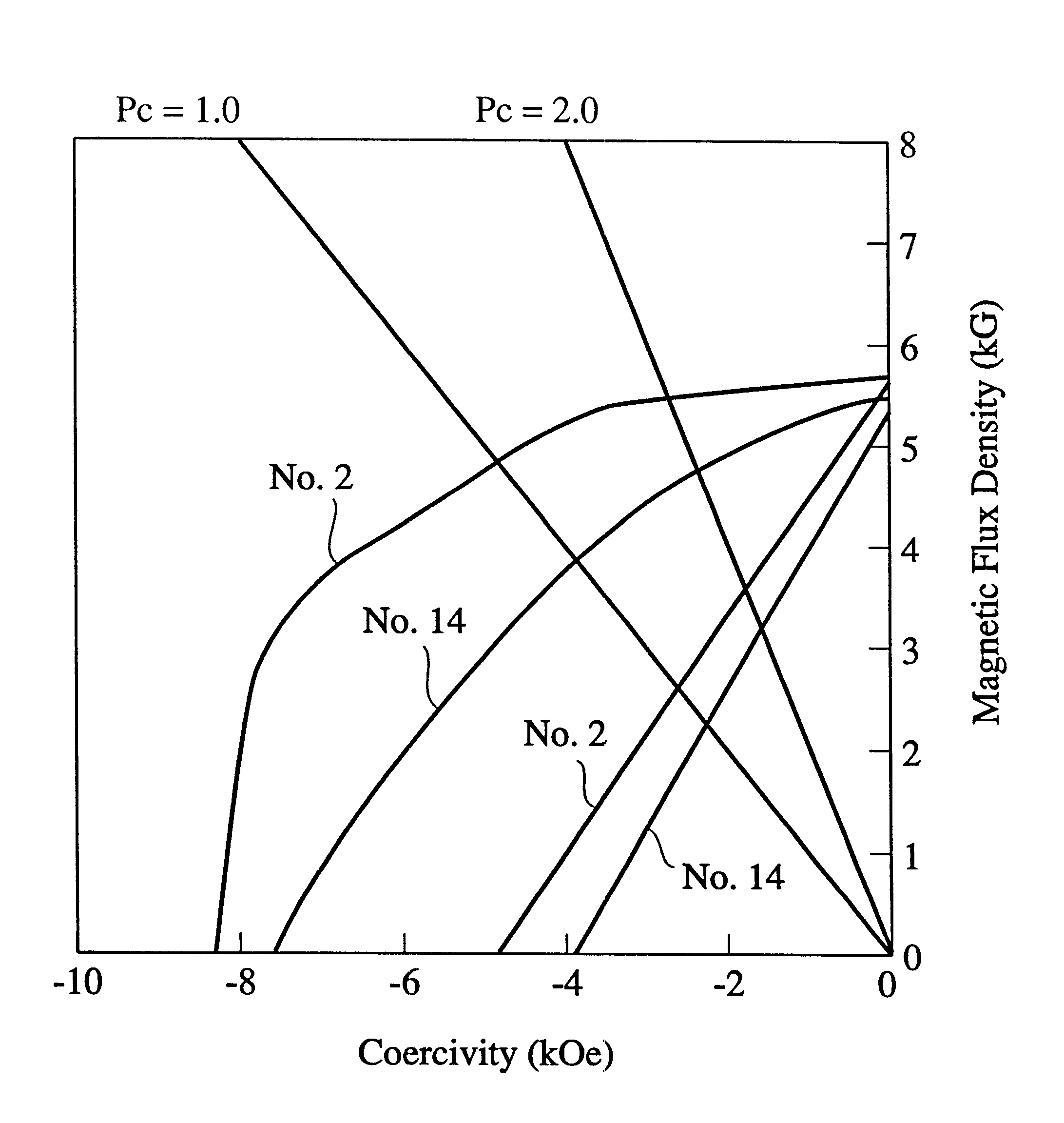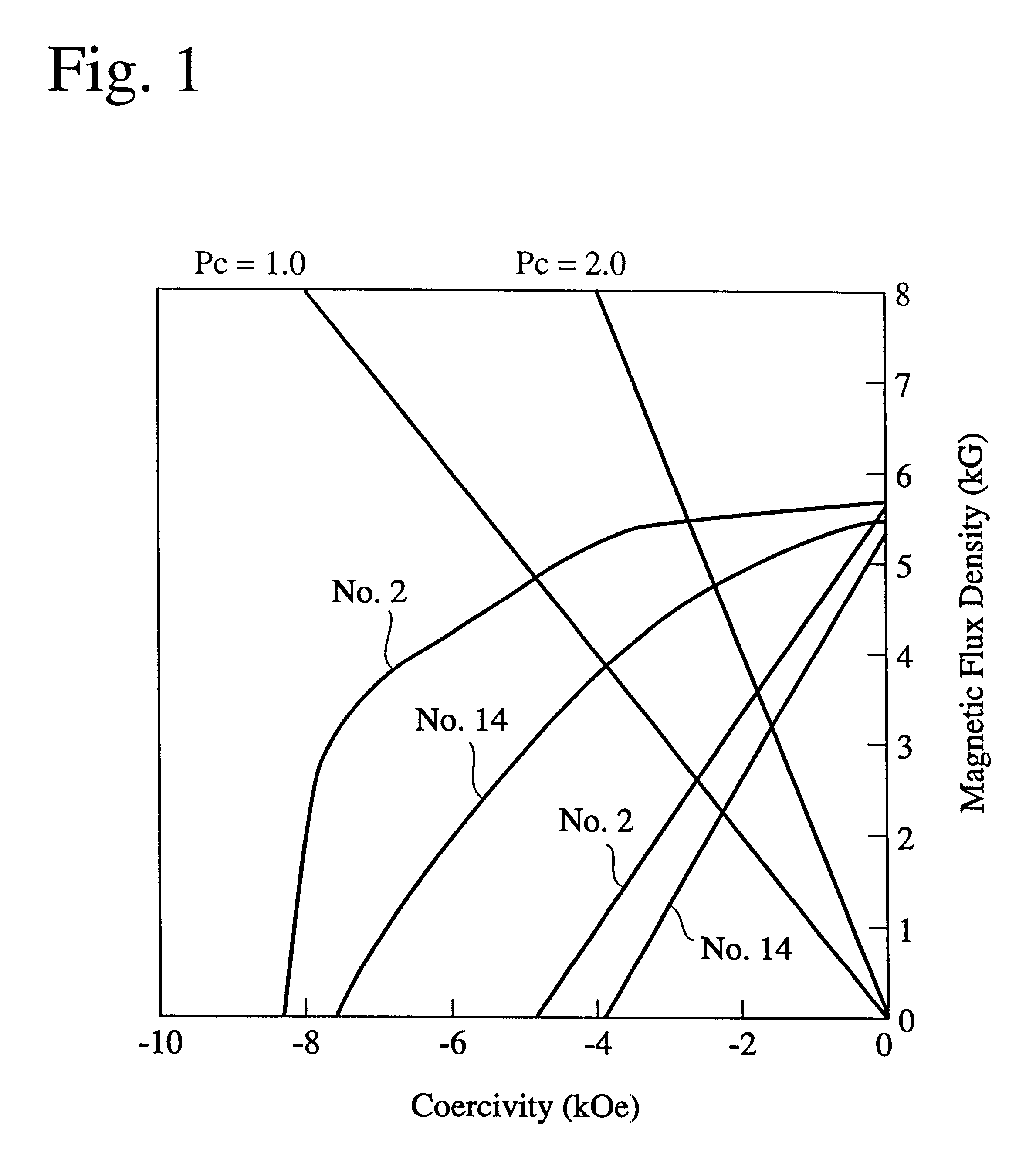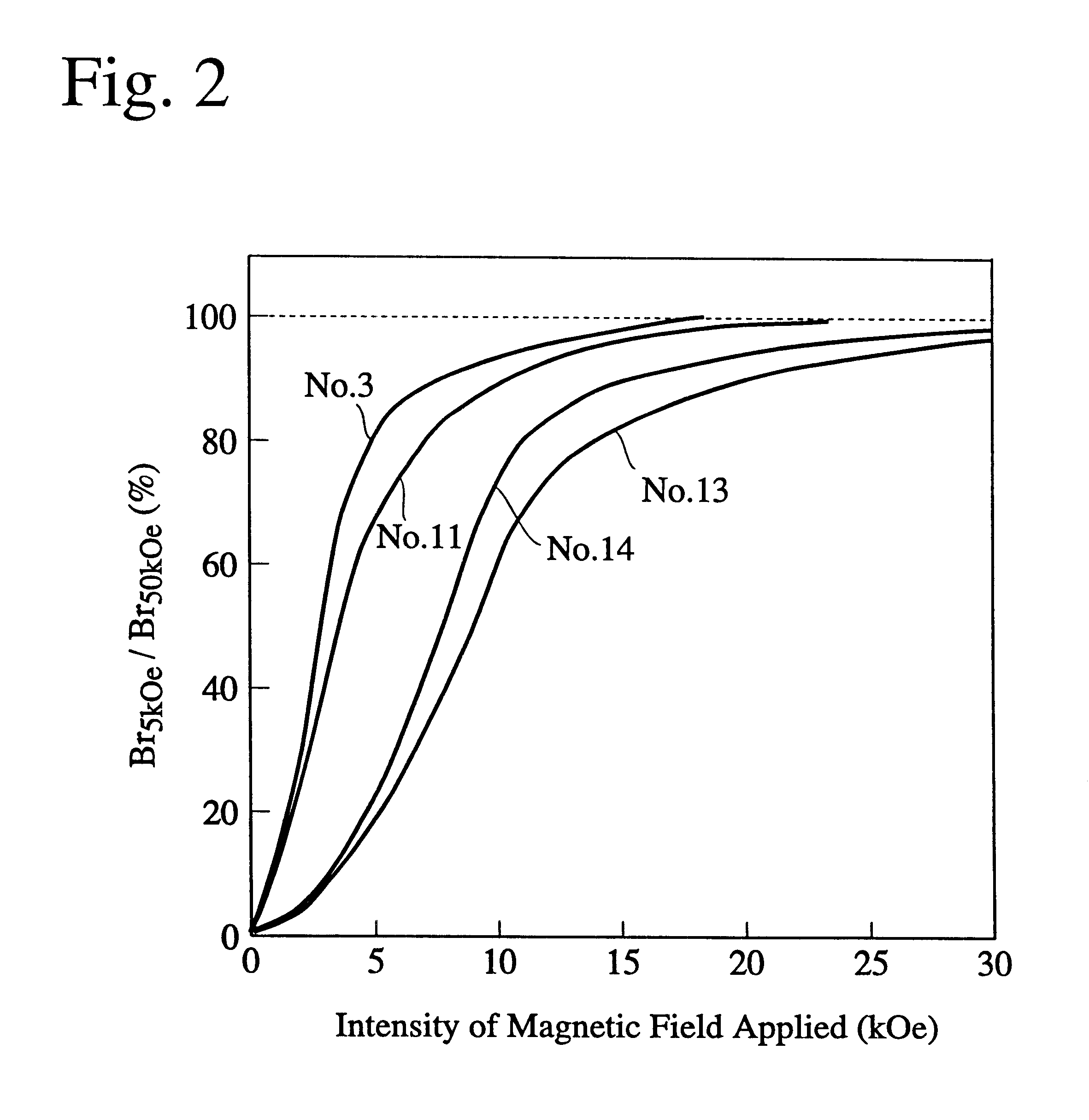Resin-bonded magnet, its product, and ferrite magnet powder and compound used therefor
a technology of ferrite magnet powder and compound, which is applied in the field can solve the problems of insufficient heat resistance and magnetizability of resin-bonded rare earth magnets comprising sm, 2 fe, and can not meet the recent needs, and achieve the effect of improving heat resistance, improving magnetizability and/or heat resistance, and small unevenness in surface magnetic flux density
- Summary
- Abstract
- Description
- Claims
- Application Information
AI Technical Summary
Benefits of technology
Problems solved by technology
Method used
Image
Examples
reference example 1
Production of R--T--N-based Magnet Powder
An R--T--N-based, coarse magnet powder of 15 .mu.m in average particle size comprising a Th.sub.2 Zn.sub.17 -type crystal phase as a phase exhibiting magnetic properties and having a basic composition of Smg.sub.9.1 Fe.sub.76.8 Mn.sub.0.5 N.sub.13.6 by atomic % was finely pulverized to an average particle size of 4.0 .mu.m by a jet mill using Ar as a pulverization medium. Then, fine pulverization was conducted by a wet ball mill using hexane, to obtain a fine powder having an average particle size of 2.3 .mu.m and a sharp particle size distribution of 0.5-30 .mu.m as measured by a HEROS RODOS system. The reason for combined use of a jet mill and a wet ball mill is: (1) fine pulverization by a jet mill provides a fine powder having a sharp particle size distribution, though the jet mill is poor in pulverization efficiency and thus unsuitable for commercial production of fine powder having an average particle size of less than 4 .mu.m; and (2) ...
reference example 2
A first ferrite magnet powder for resin-bonded magnets having an average particle size of 0.94 .mu.m and containing (Si+Ca) in an amount of 0.178% by weight as SiO.sub.2 +CaO and (Al+Cr) in an amount of 0.083% by weight as Al.sub.2 O.sub.3 +Cr.sub.2 O.sub.3 was produced in the same manner as in Reference Example 1 except for changing the conditions of dry fine pulverization by ball mill for first ferrite magnet powder. This first ferrite magnet powder and the R--T--N-based magnet powder of Example 1 were compounded at a weight ratio of 20 / 80. A slurry was produced, and an anisotropic, resin-bonded magnet was produced therefrom and measured with respect to properties in the same manner as in Reference Example 1. The results are shown as Sample No. 21 in Table 1.
reference example 3
A first ferrite magnet powder for resin-bonded magnets having an average particle size of 1.98 .mu.m and containing (Si+Ca) in an amount of 0.041% by weight as SiO.sub.2 +CaO and (Al+Cr) in an amount of 0.076% by weight as Al.sub.2 O.sub.3 +Cr.sub.2 O.sub.3 was produced in the same manner as in Reference Example 1 except for changing the conditions of dry fine pulverization by ball mill for first ferrite magnet powder. This first ferrite magnet powder and the R--T--N-based magnet powder of Reference Example 1 were compounded at a weight ratio of 20 / 80. A slurry was then produced, and an anisotropic, resin-bonded magnet was produced therefrom and measured with respect to properties in the same manner as in Reference Example 1. The results are shown as Sample No. 22 in Table 1.
PUM
| Property | Measurement | Unit |
|---|---|---|
| particle size | aaaaa | aaaaa |
| particle size | aaaaa | aaaaa |
| particle size | aaaaa | aaaaa |
Abstract
Description
Claims
Application Information
 Login to View More
Login to View More - R&D
- Intellectual Property
- Life Sciences
- Materials
- Tech Scout
- Unparalleled Data Quality
- Higher Quality Content
- 60% Fewer Hallucinations
Browse by: Latest US Patents, China's latest patents, Technical Efficacy Thesaurus, Application Domain, Technology Topic, Popular Technical Reports.
© 2025 PatSnap. All rights reserved.Legal|Privacy policy|Modern Slavery Act Transparency Statement|Sitemap|About US| Contact US: help@patsnap.com



